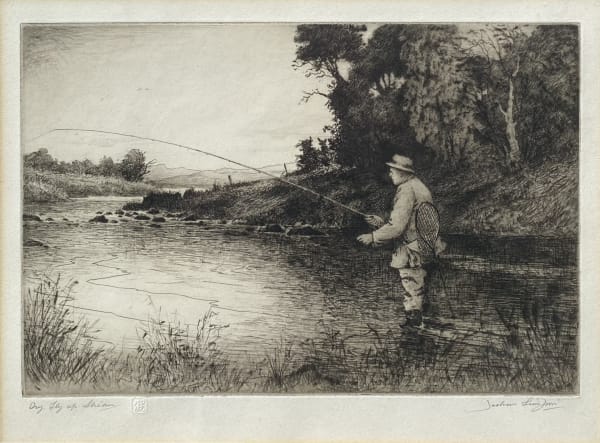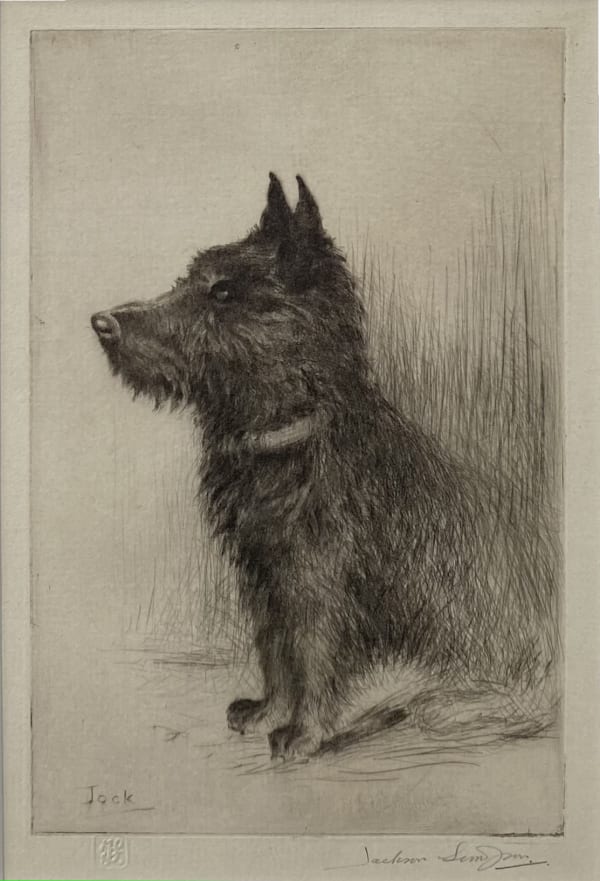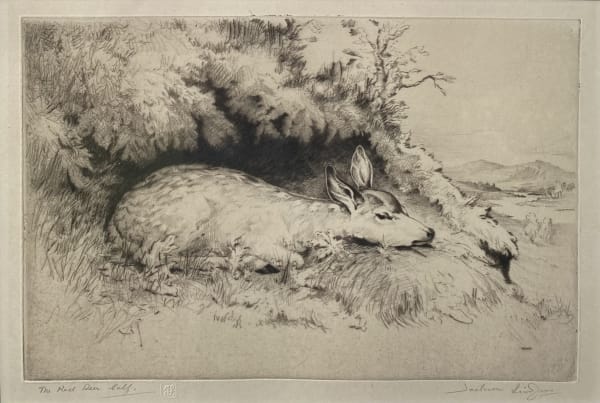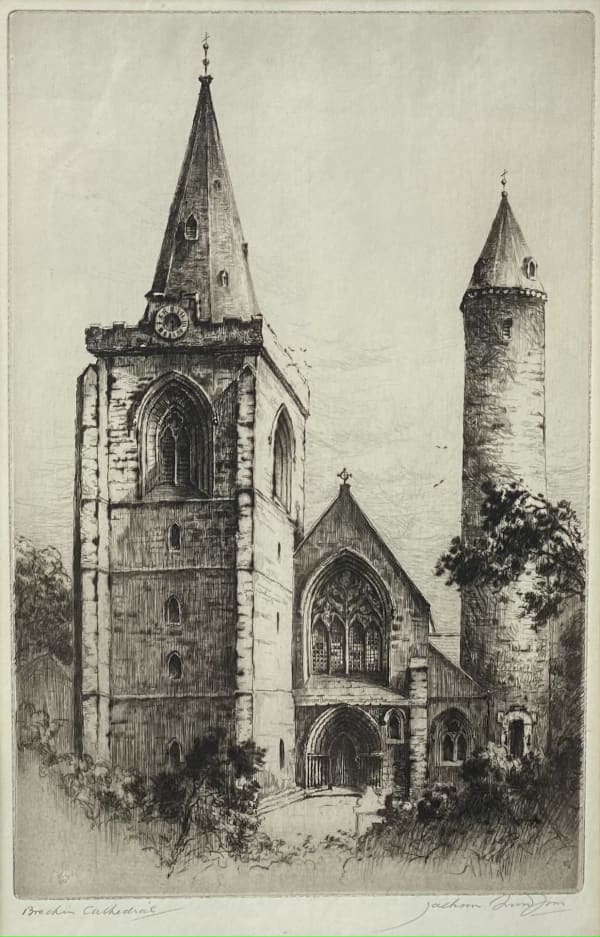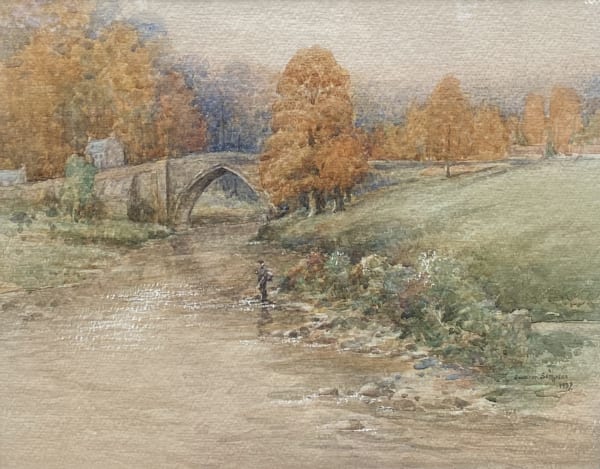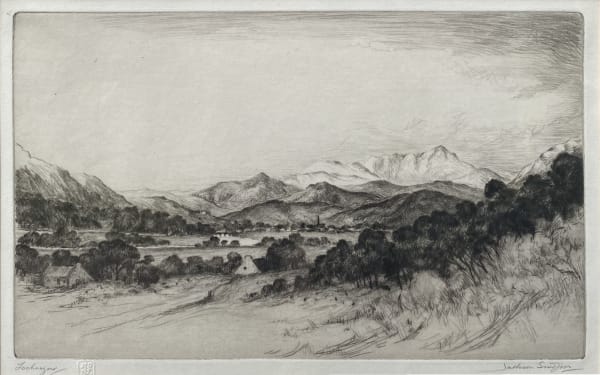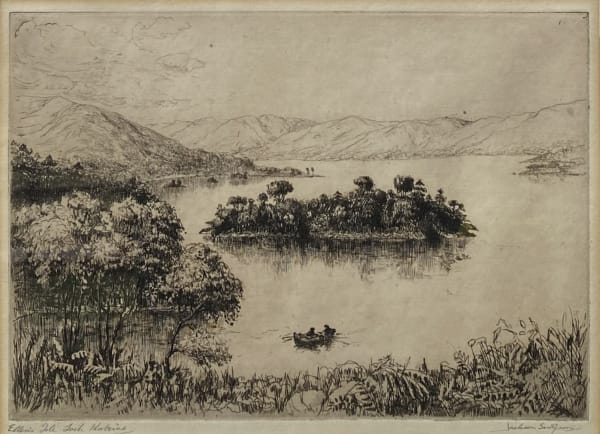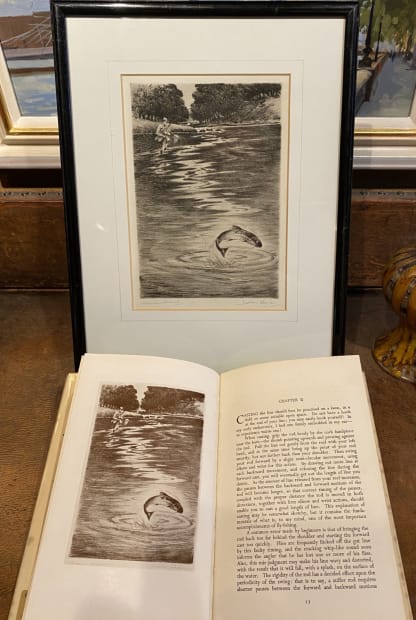-

-
ANGLING
-
ANGLING
-
It is 60 years since Jackson Simpson died, and this small exhibition is a celebration of his work, mainly seen through his favourite medium of etching but accompanied by a number of watercolours. A small exhibition was held at Aberdeen Art Gallery in 1993 and the present online Show continues the idea of bringing his fine body of work to a wider audience and celebrating the life of a man who, by all accounts was a considerate and gentle soul, who lived through the horrors of two world wars while winning the MC for bravery in 1916.
-
BIRDS
-
Birds
-
Henry Jackson Simpson was born into a large Aberdonian family on 12 March 1893. He went to school at Ferryhill Primary and later at Robert Gordon’s College. He was a delicate child and during his summer holidays, when the whole Simpson family moved to Newtonhill to their holiday home, would spend much of his time with his aunt and uncle at their summer home nearby, to escape the hurly burly of family life. Jackson Simpson’s uncle, Alec Fraser, was an accomplished artist and head of Gray’s Art School in Aberdeen. At Newtonhill, the young Simpson would sit quietly at the back of the studio and watch his uncle paint and these early years had a profound influence on his artistic career.
-
DOGS
-
DOGS
-
Henry Jackson Simpson shortened his name to Jackson Simpson after he started etching to avoid confusion with another Aberdeen etcher of the same name. His career was interrupted in 1914 when the copper used in etching plies was required for the war effort and, despite his delicate constitution, he answered the call to arms and left for France. He was transferred from the artillery to the Northumberland Fusiliers, otherwise known as The Tyneside Scottish Regiment, where he rose through the ranks to become a Captain, winning the Military Cross for bravery.
-
ANIMALS
-
Animals
-
After the war he joined the family business located at Union Street, resumed etching and began studying at Gray’s School of Art. He was an outstanding draughtsman and was frequently employed by the hospital at Forresterhill to paint rapid studies of diseased eyes during operations, some of which were so accurate they were printed in medical journals. In 1949 he illustrated the book ‘The Young Angler’ written by John Steele Allan
In 1921 Jackson Simpson married Isobella Benzie Hendry and they had four children. Mrs Simpson died in 1940 and Jackson remarried, Violet Wilson Gibb, in 1943 and they had two children.
-
ARCHITECTURE
-
Architecture
-
Jackson Simpson loved the outdoor, sporting life. He was an excellent shot and a talented fisherman and was often invited to join hunting parties including ones at Crathes and Tarland. His hobbies were also the subject of his art - Crathes Castle, the fisherman on the river, etchings of duck or other waterfowl, and watercolours of his faithful gun dogs and favourite rivers. His love of Aberdeen is reflected in the etchings of the city’s buildings, for example Marischal College and King’s College. They were also produced for another reason, as mementoes for students to remember their happy student days in Aberdeen, and they were every bit a money spinner for this shrewd Aberdonian. He was a prolific artist who painted and etched a wide range of subject matter, including seascapes, still lifes, animal studies, topographical views and miniatures, the latter painted on card and ivorine using a magnifying glass. Simpson painted many parts of the northeast, sometimes working from sketches and at other times in the open air, en plein air.
-
LANDSCAPE
-
Landscape
-
In addition to painting, Simpson worked on restoration in his studio at 4 Diamond St and was the contact in the north east for Sotheby’s, Christies and Phillips auction houses. He was also a member of the Northern Arts Club and ran painting classes. Due to ill health he retired early, but his love of art never ceased. Right up until his death he was taken out sketching by his doctor, despite being practically bed-ridden. Many of his water watercolours were road scenes painted from the car. He died in 1963. Jackson Simpson’s art reflects the light and atmosphere of his favourite areas of the north east of Scotland. His interest in the sporting life, coupled with art, has left us with many attractive landscapes and charming images of his favourite animals. He was a well rounded artist, capable of working in all sorts of media. An outstanding draughtsman, his etchings and watercolours of Aberdeen and its surrounds record the many local views which have now disappeared and because of this he plays an important part in the visual history of Aberdeen.
[With grateful thanks to Aberdeen City Council (Archives, Gallery & Museums collection)]
-
-
CITATION
For Conspicuous gallantry and devotion to duty during recent operations. On October 4th, near Billy-Barcleau, he [2/Lt Simpson] led his platoon splendidly and captured a machine gun and its team in La Beau Marsis. He then pushed on and took the dynamite factory, and still advancing, established a forward post at the bridge of the Canal. Losing several men here from heavy trench mortar and machine gun fire, he, with great coolness and ability, succeeded in withdrawing his command to safety, getting in all the wounded. He did fine work.”




